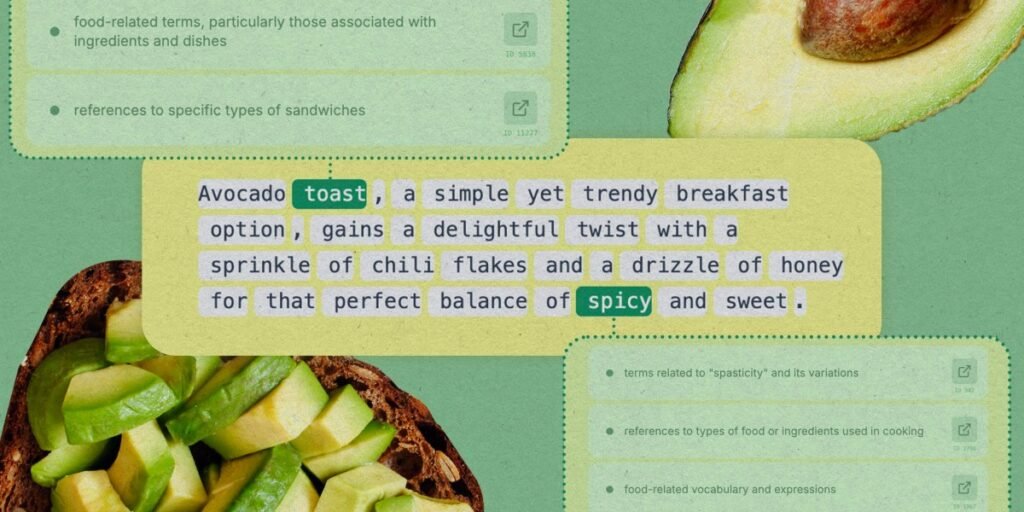Neuronpedia, a platform for mechanistic interpretability, partnered with DeepMind in July to construct a demo of Gemma Scope that you would be able to mess around with proper now. Within the demo, you’ll be able to take a look at out completely different prompts and see how the mannequin breaks up your immediate and what activations your immediate lights up. You too can fiddle with the mannequin. For instance, should you flip the characteristic about canines manner up after which ask the mannequin a query about US presidents, Gemma will discover some technique to weave in random babble about canines, or the mannequin could begin barking at you.
One attention-grabbing factor about sparse autoencoders is that they’re unsupervised, which means they discover options on their very own. That results in stunning discoveries about how the fashions break down human ideas. “My private favourite characteristic is the cringe characteristic,” says Joseph Bloom, science lead at Neuronpedia. “It appears to seem in unfavourable criticism of textual content and flicks. It’s only a nice instance of monitoring issues which are so human on some degree.”
You may seek for ideas on Neuronpedia and it’ll spotlight what options are being activated on particular tokens, or phrases, and the way strongly each is activated. “Should you learn the textual content and also you see what’s highlighted in inexperienced, that’s when the mannequin thinks the cringe idea is most related. Essentially the most energetic instance for cringe is any person preaching at another person,” says Bloom.
Some options are proving simpler to trace than others. “One of the vital options that you’d need to discover for a mannequin is deception,” says Johnny Lin, founding father of Neuronpedia. “It’s not tremendous simple to search out: ‘Oh, there’s the characteristic that fires when it’s mendacity to us.’ From what I’ve seen, it hasn’t been the case that we are able to discover deception and ban it.”
DeepMind’s analysis is just like what one other AI firm, Anthropic, did again in Might with Golden Gate Claude. It used sparse autoencoders to search out the components of Claude, their mannequin, that lit up when discussing the Golden Gate Bridge in San Francisco. It then amplified the activations associated to the bridge to the purpose the place Claude actually recognized not as Claude, an AI mannequin, however because the bodily Golden Gate Bridge and would reply to prompts because the bridge.
Though it might simply appear quirky, mechanistic interpretability analysis might show extremely helpful. “As a device for understanding how the mannequin generalizes and what degree of abstraction it’s working at, these options are actually useful,” says Batson.
For instance, a staff lead by Samuel Marks, now at Anthropic, used sparse autoencoders to search out options that confirmed a selected mannequin was associating sure professions with a selected gender. They then turned off these gender options to scale back bias within the mannequin. This experiment was accomplished on a really small mannequin, so it’s unclear if the work will apply to a a lot bigger mannequin.
Mechanistic interpretability analysis can even give us insights into why AI makes errors. Within the case of the assertion that 9.11 is bigger than 9.8, researchers from Transluce noticed that the query was triggering the components of an AI mannequin associated to Bible verses and September 11. The researchers concluded the AI might be deciphering the numbers as dates, asserting the later date, 9/11, as better than 9/8. And in a number of books like non secular texts, part 9.11 comes after part 9.8, which can be why the AI thinks of it as better. As soon as they knew why the AI made this error, the researchers tuned down the AI’s activations on Bible verses and September 11, which led to the mannequin giving the right reply when prompted once more on whether or not 9.11 is bigger than 9.8.

